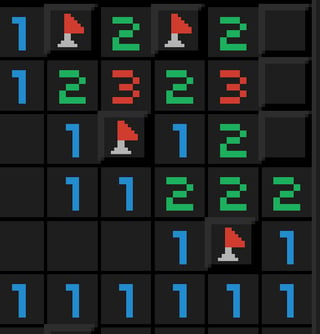As Fabio says in a comment, the top $2$ is already touching a mine on its left. Therefore that $2$ only needs to touch one extra mine on the right, which must be one of the top two among those three empty cells. From the $2$ two below it, you know there's mines in the bottom two among those three empty cells, and then the very top empty cell must be mineless.
Meanwhile, in the empty region on the left, there's a whole load of cells that you know are mineless because they're next to $1$s which are already touching mines.
And how could I apply what I learn to future situations?
- If an $n$-numbered cell is touching exactly $n$ empty cells and isn't touching any mines so far, then all $n$ of those empty cells MUST be mined.
- If an $n$-numbered cell is touching exactly $n$ mines, then all empty cells it's touching MUST be mineless.
- If you think you've found a contradiction in your chain of logic, then one of your steps must be false. (Unless there's a mistake in the puzzle, but that won't happen with a properly coded Minesweeper program.) Go back and double-check each of your deductions until you figure out which one is wrong. If you can't figure it out from a double-check, try writing explicitly your logic (in the style of my points 1 and 2 above) and then triple-check. If you'd replaced your words "and so does the top" by "the top $2$ is touching exactly two empty cells and isn't touching any mines so far, so both of those two cells must be mined", then you would have seen your mistake immediately.

